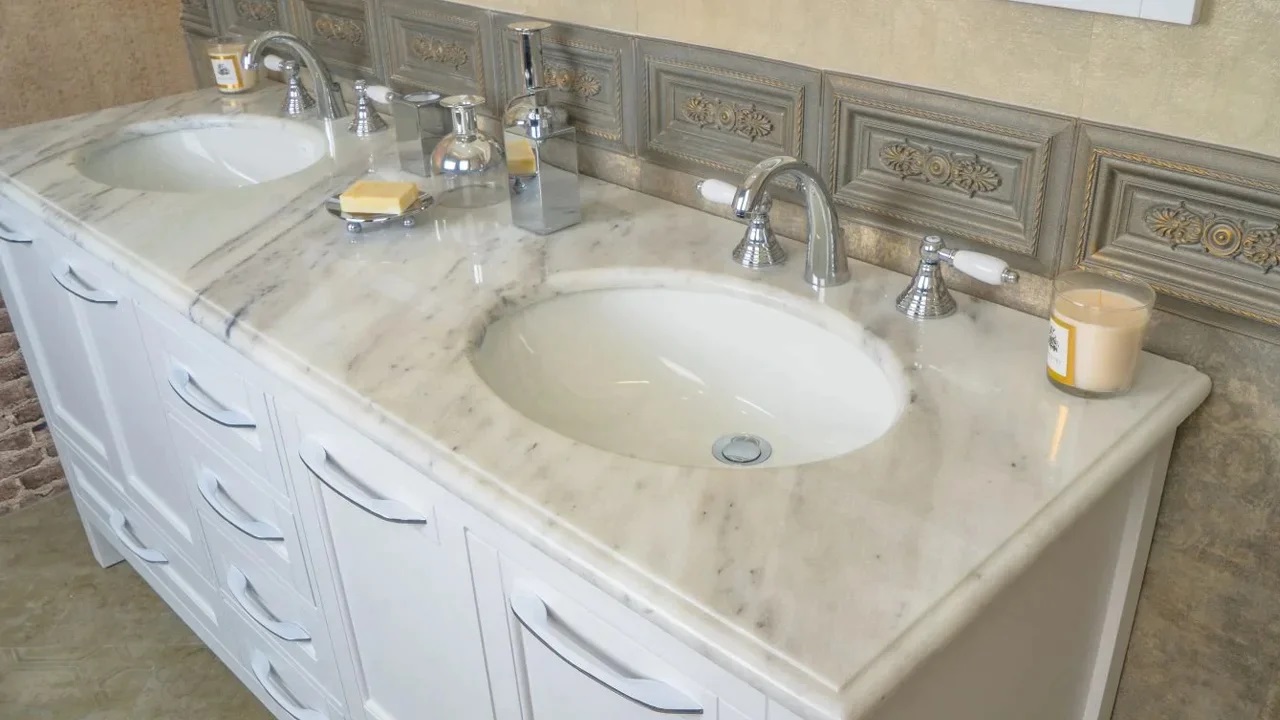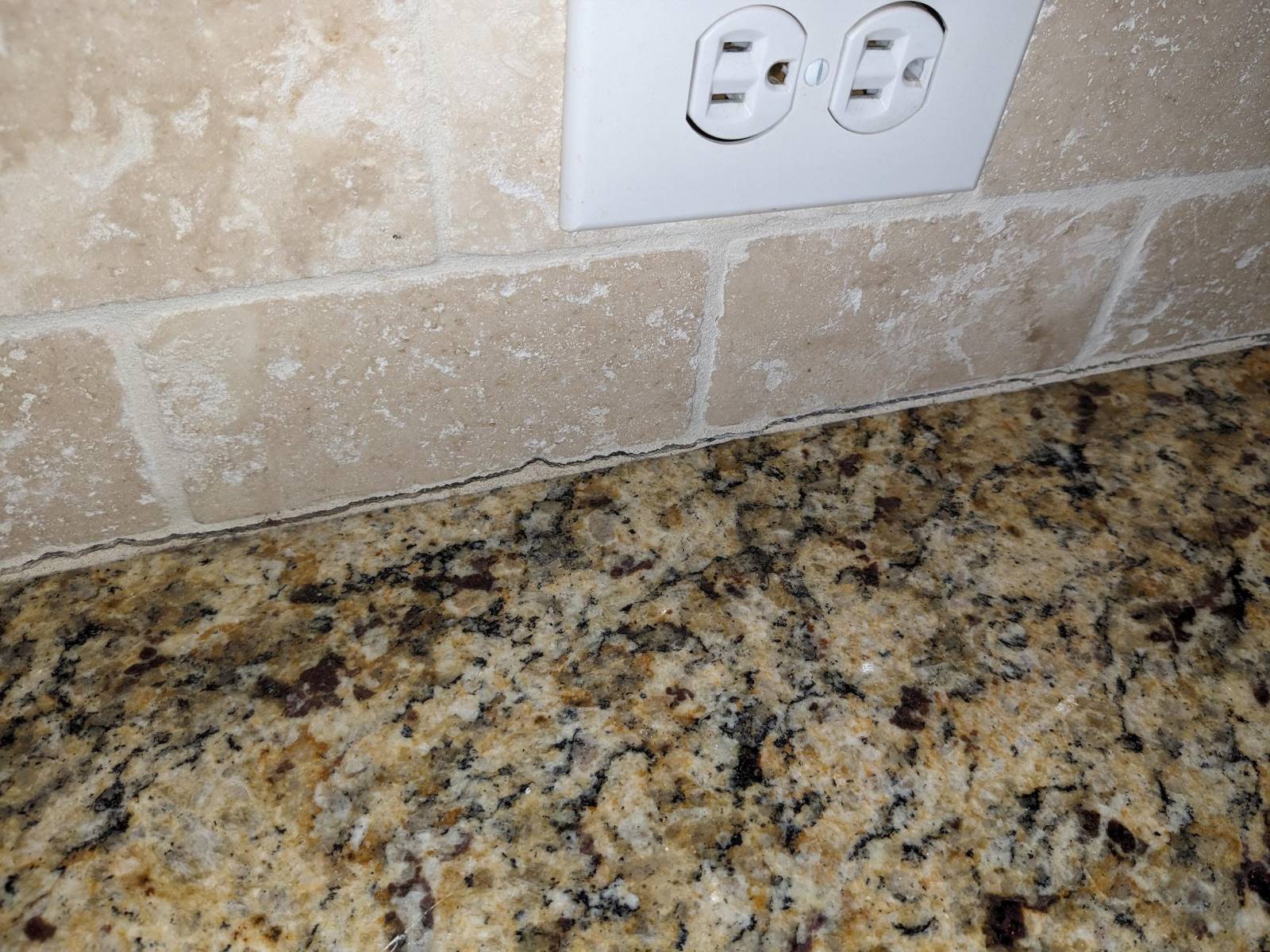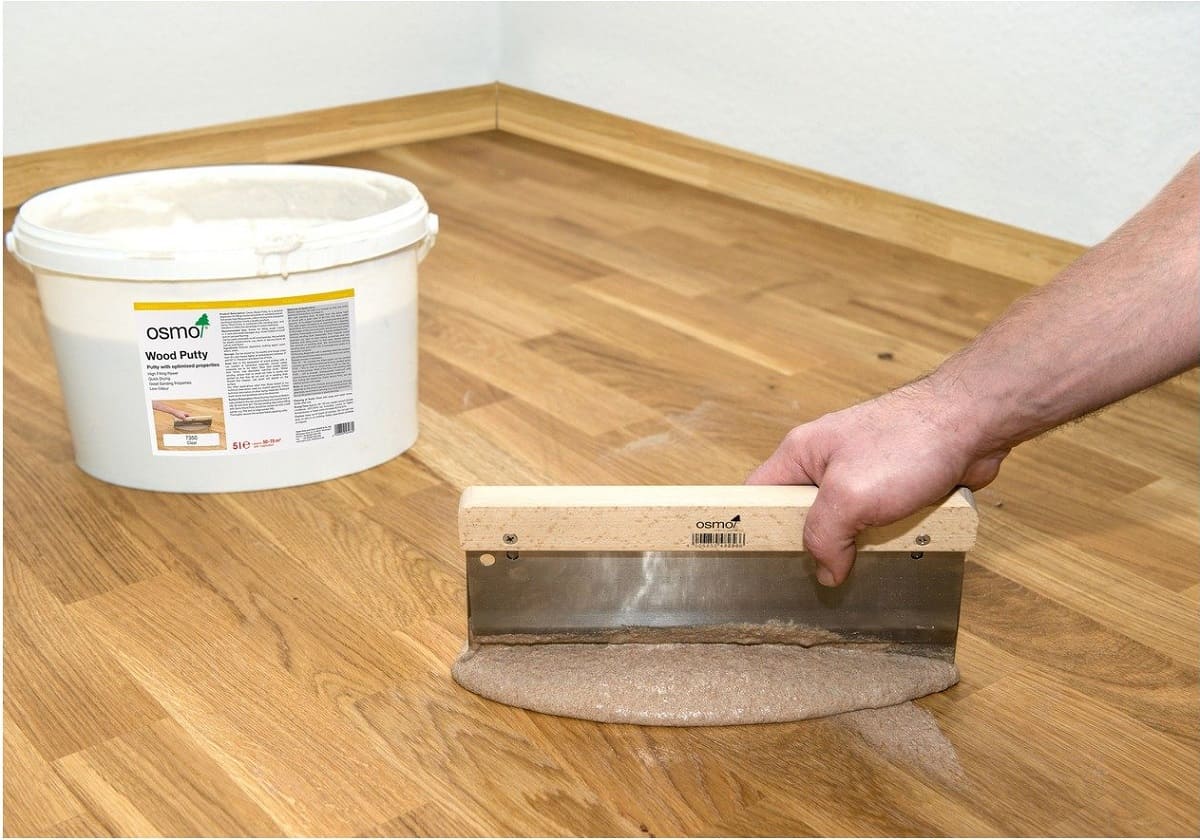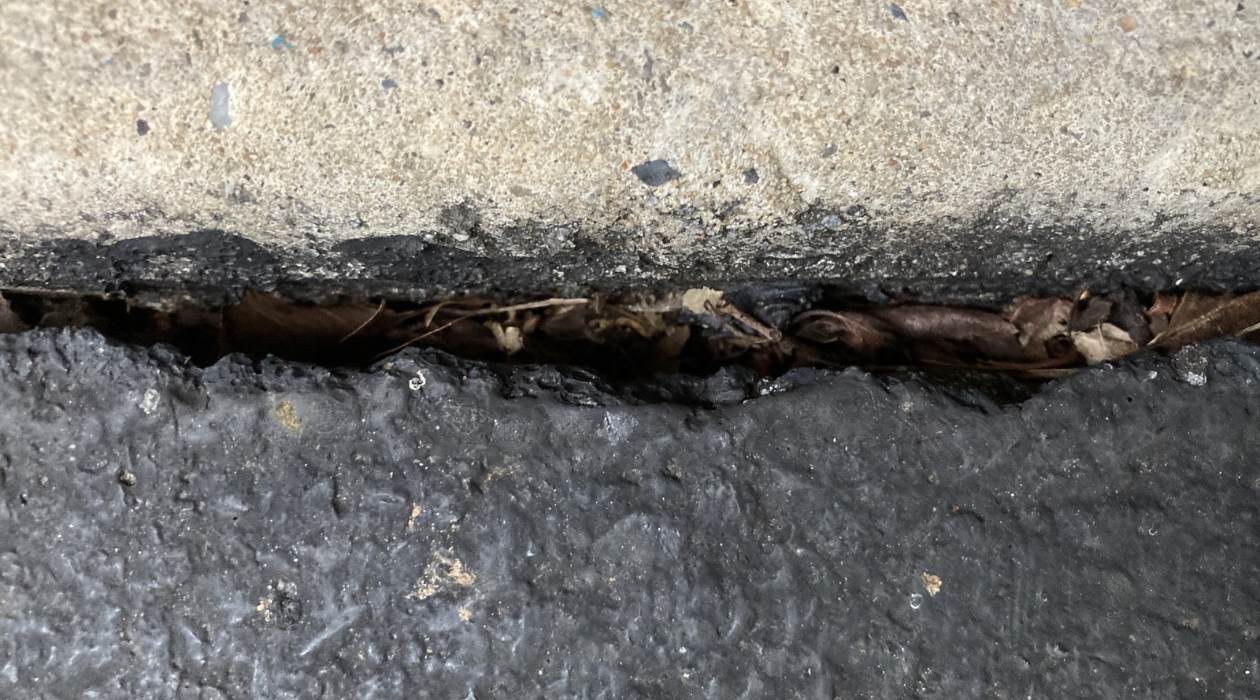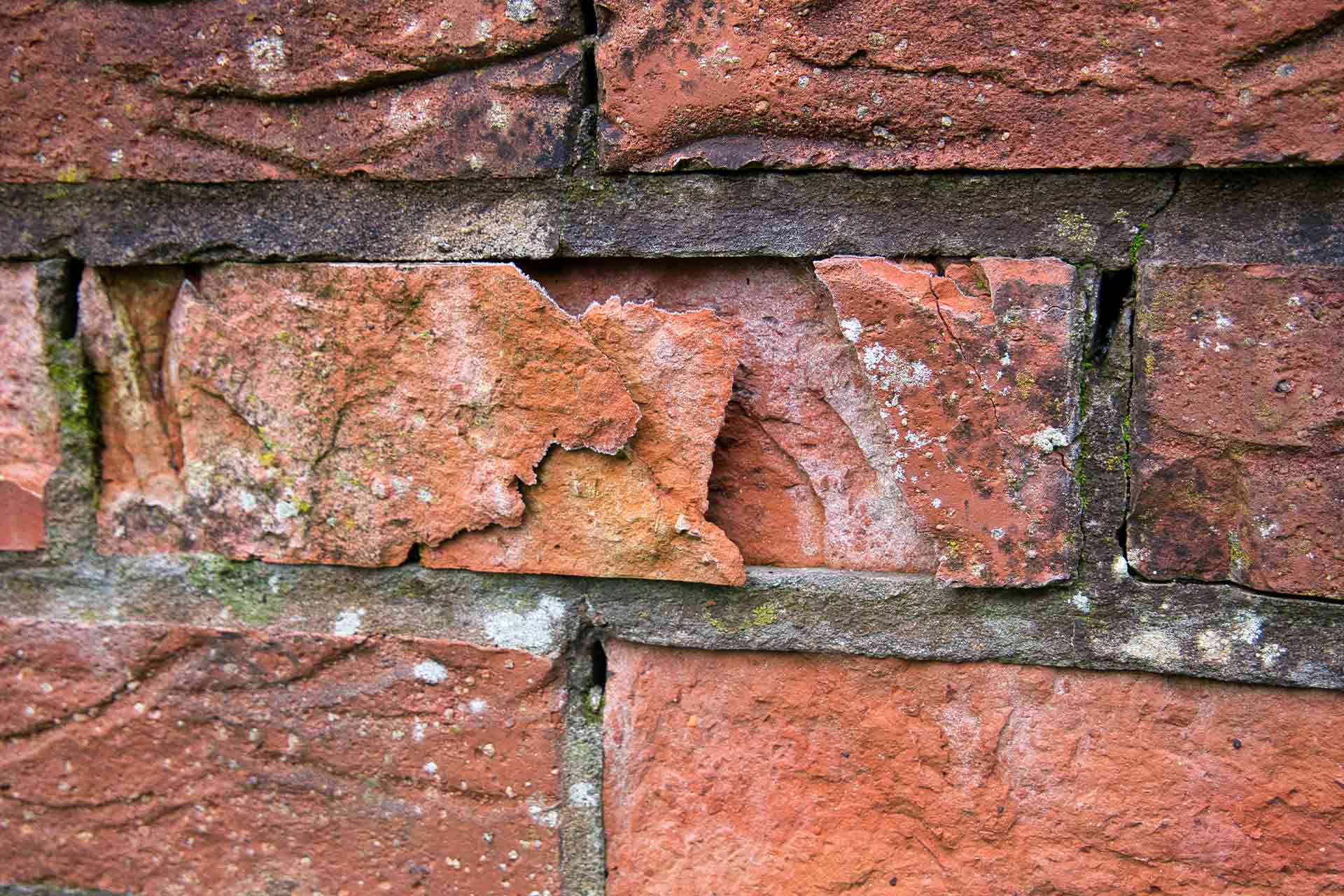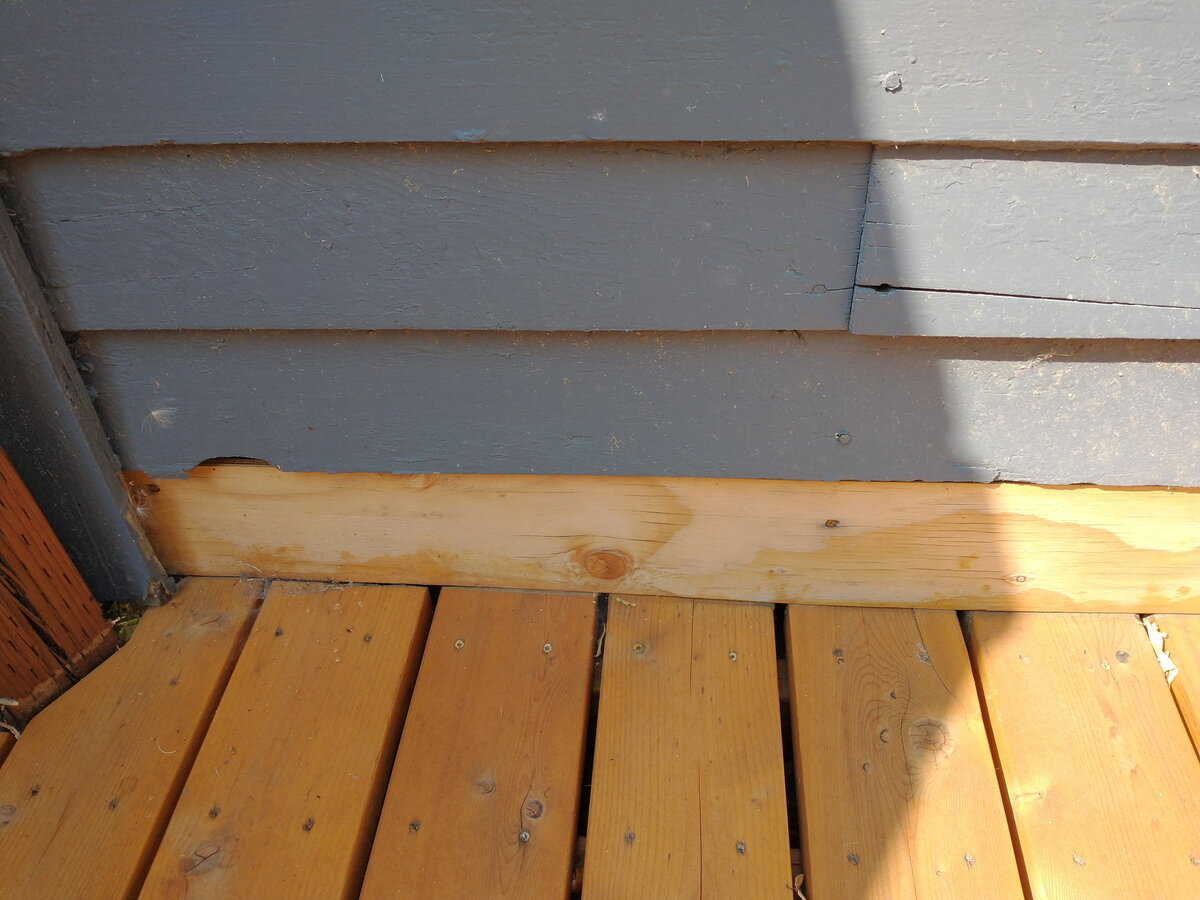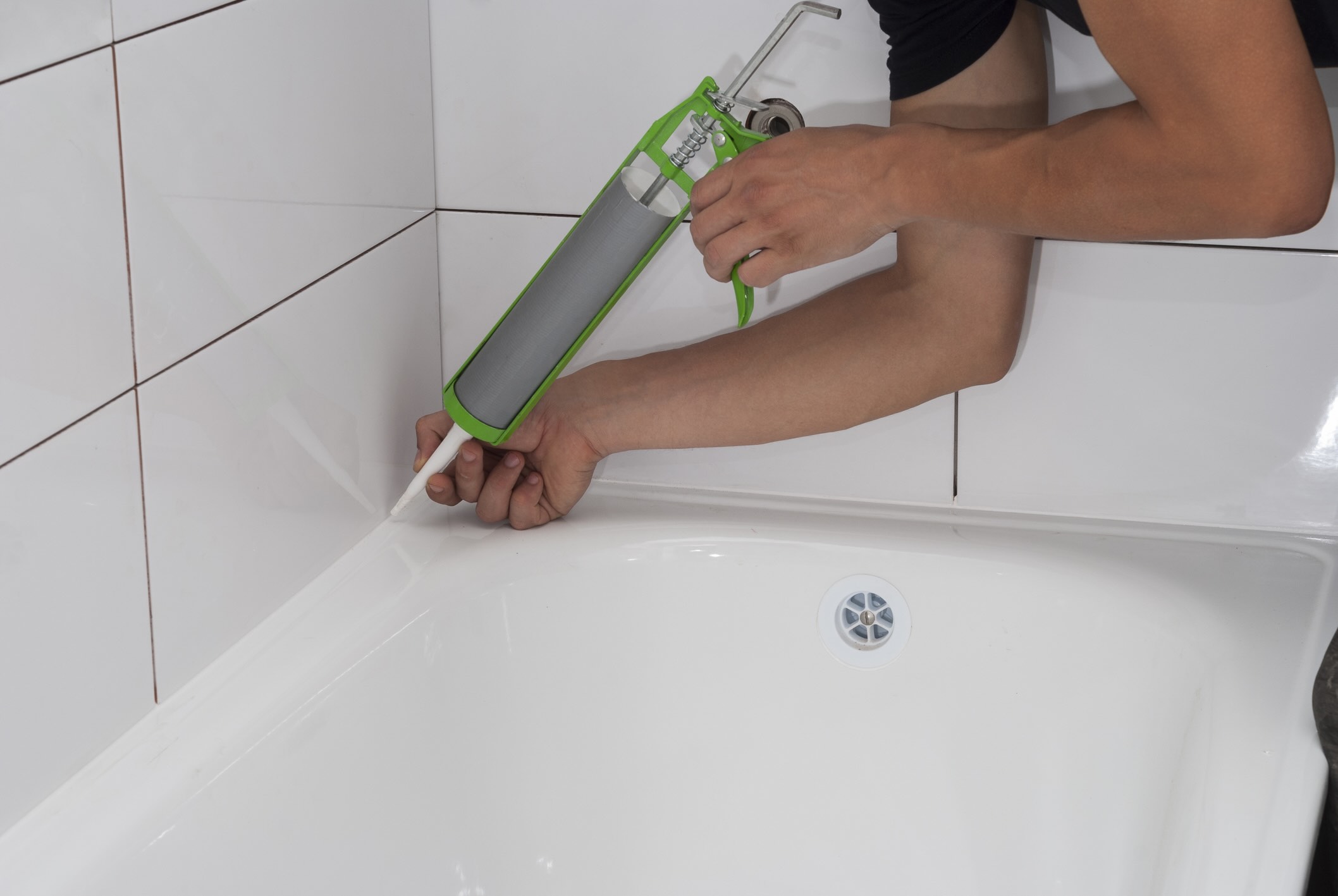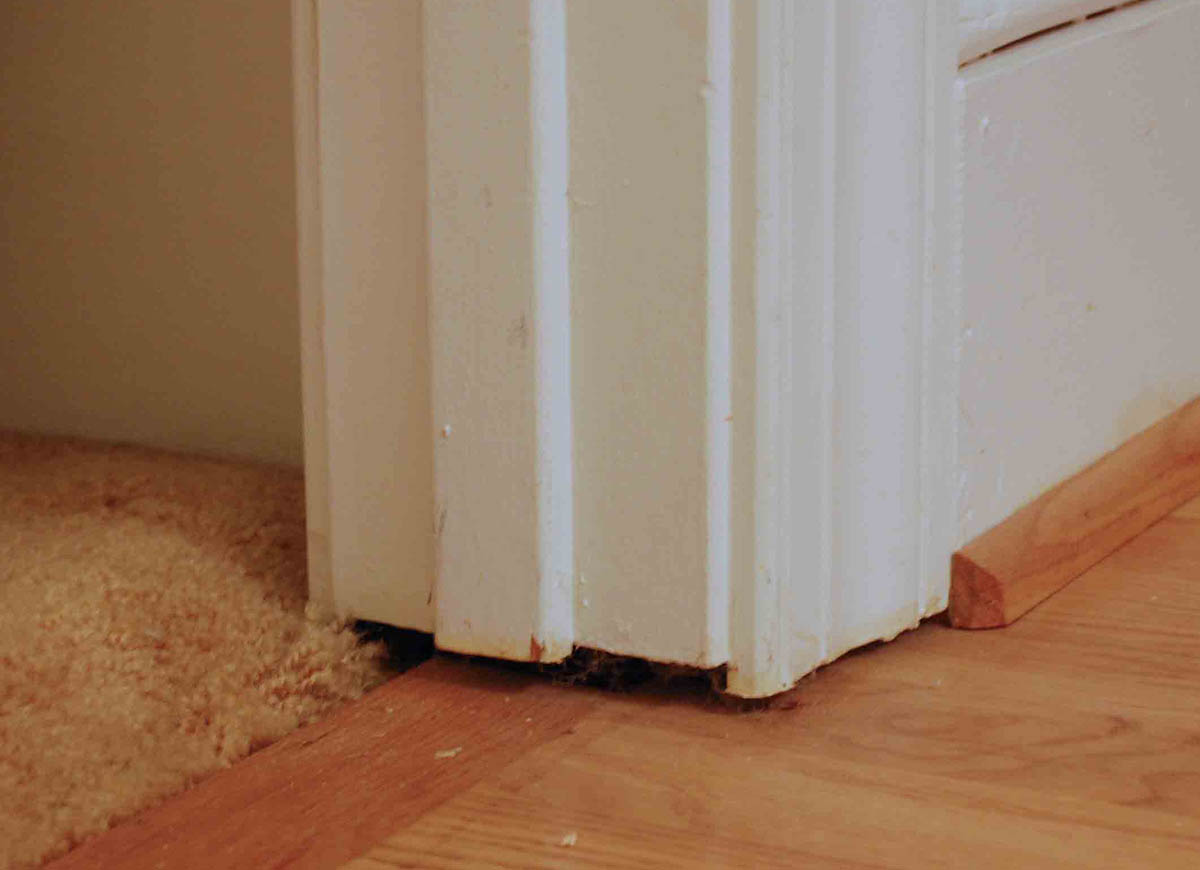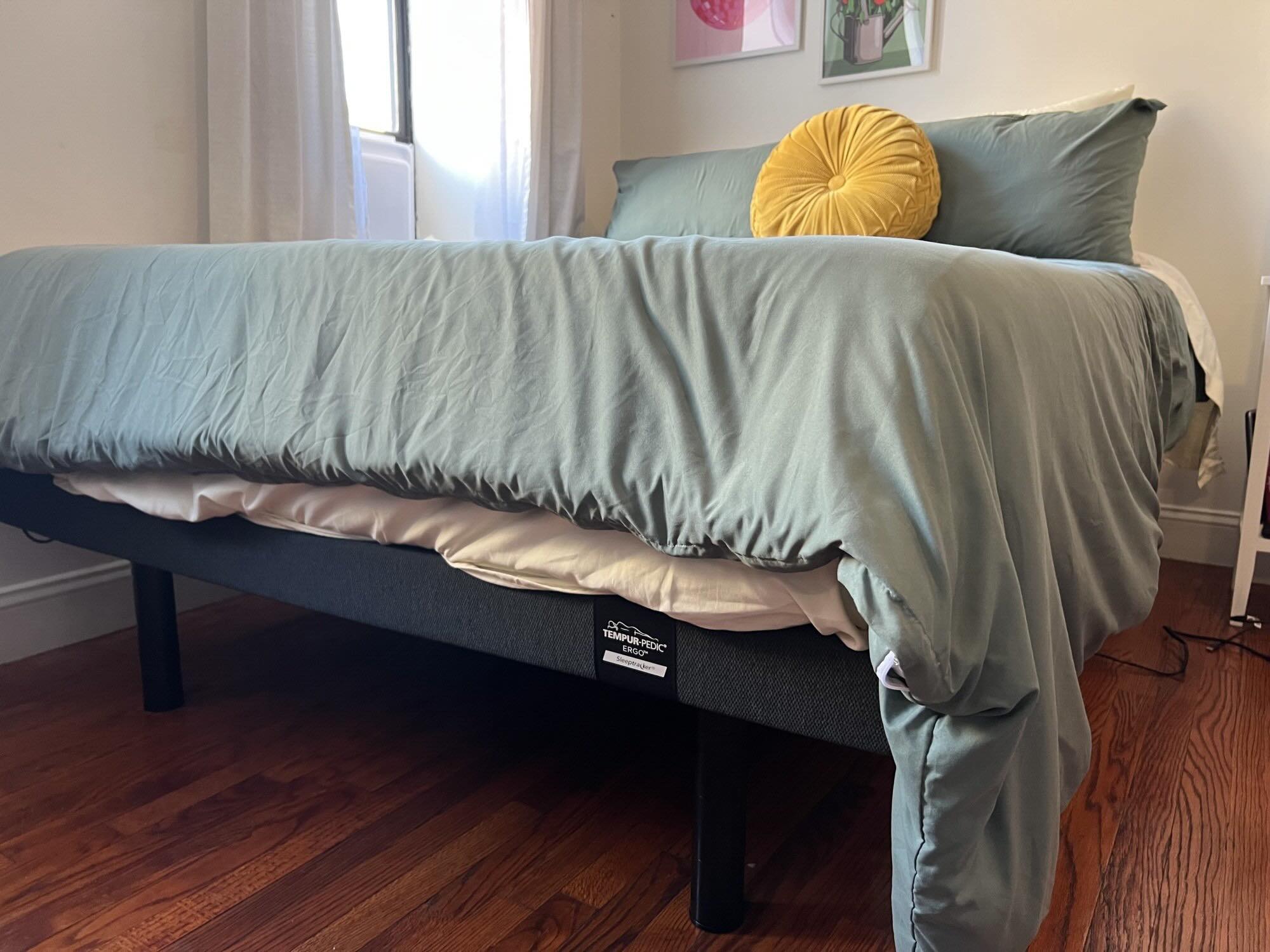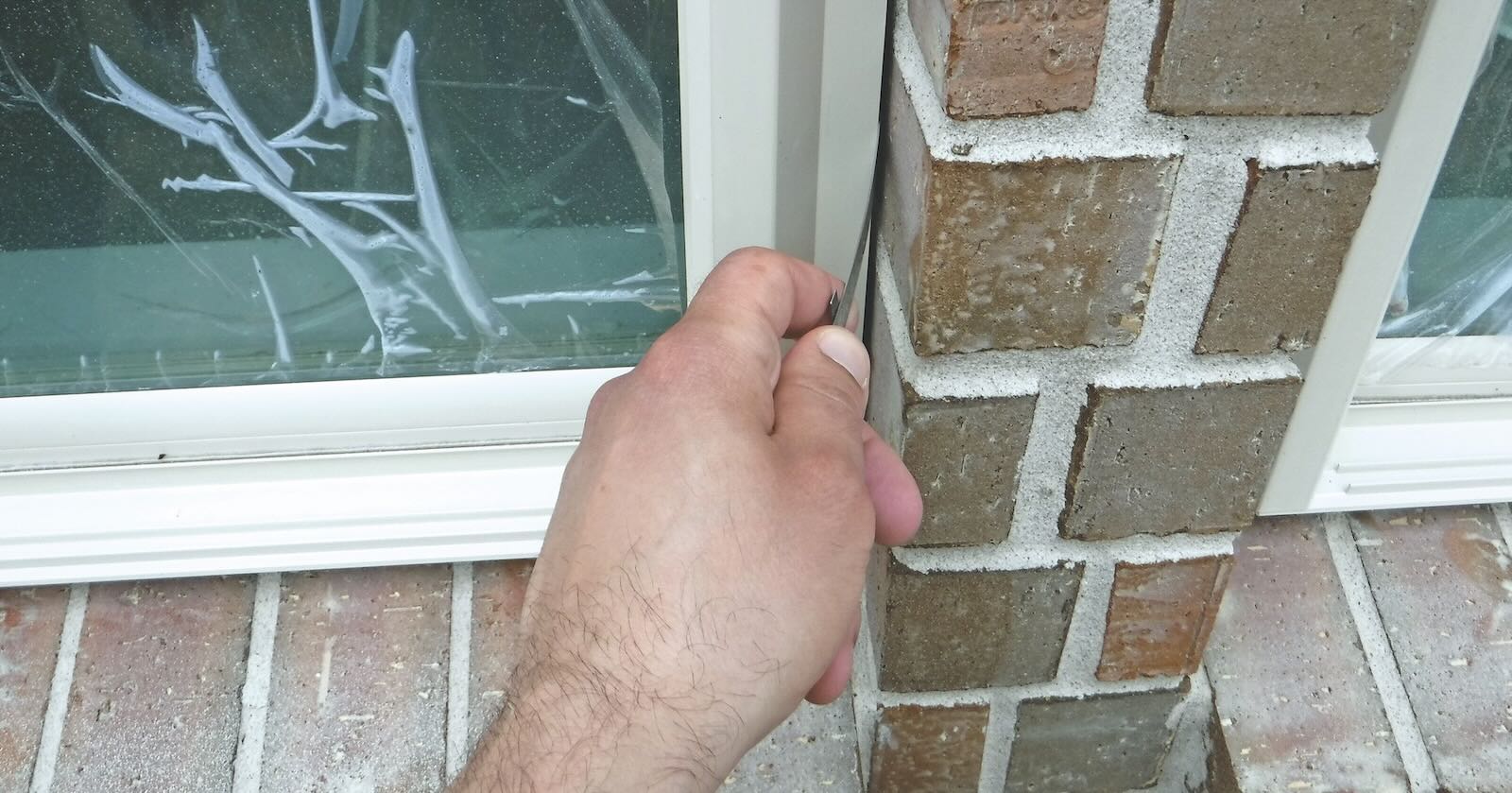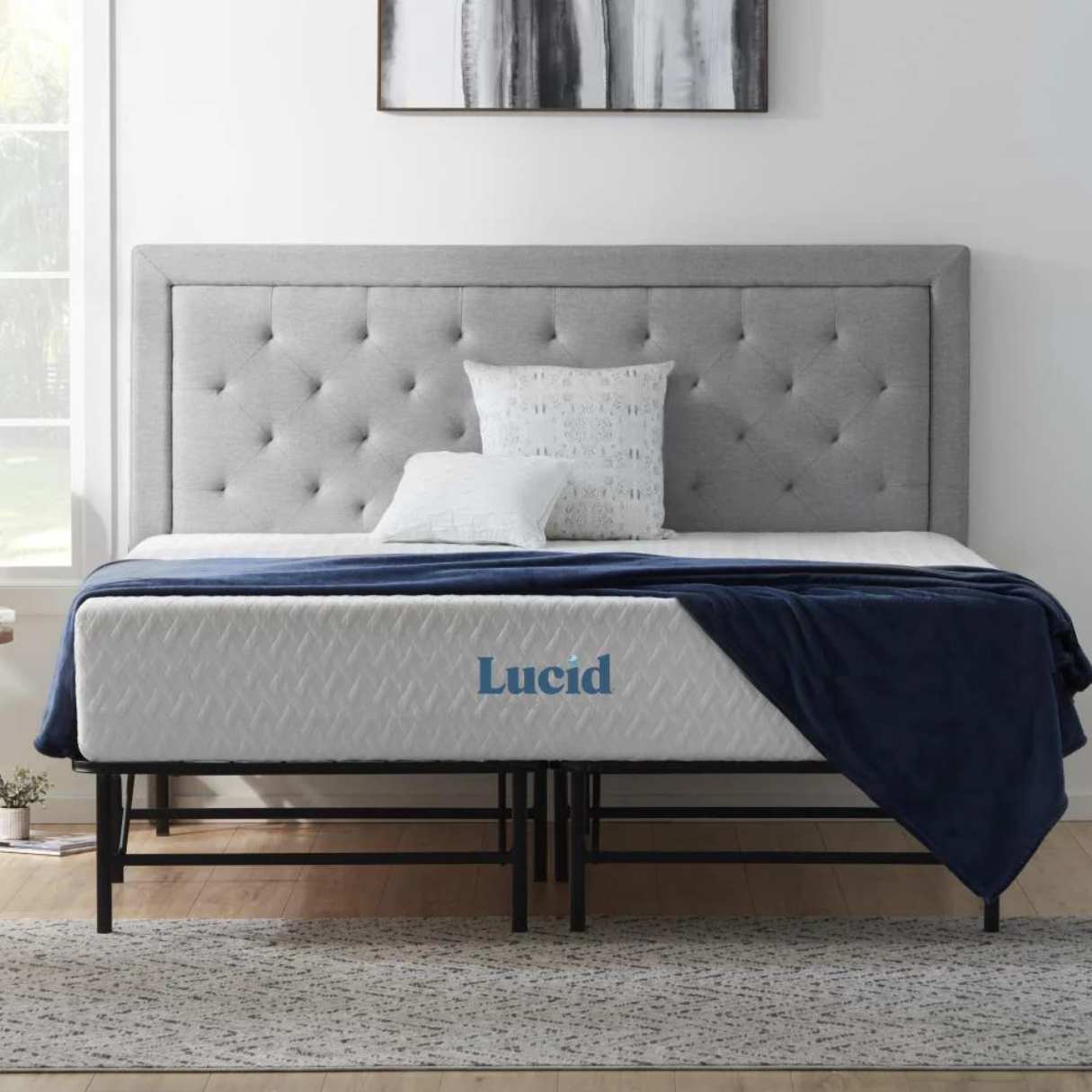Home>Furniture>Bedroom Furniture>How To Fill The Gap Between A Mattress And Bed Frame
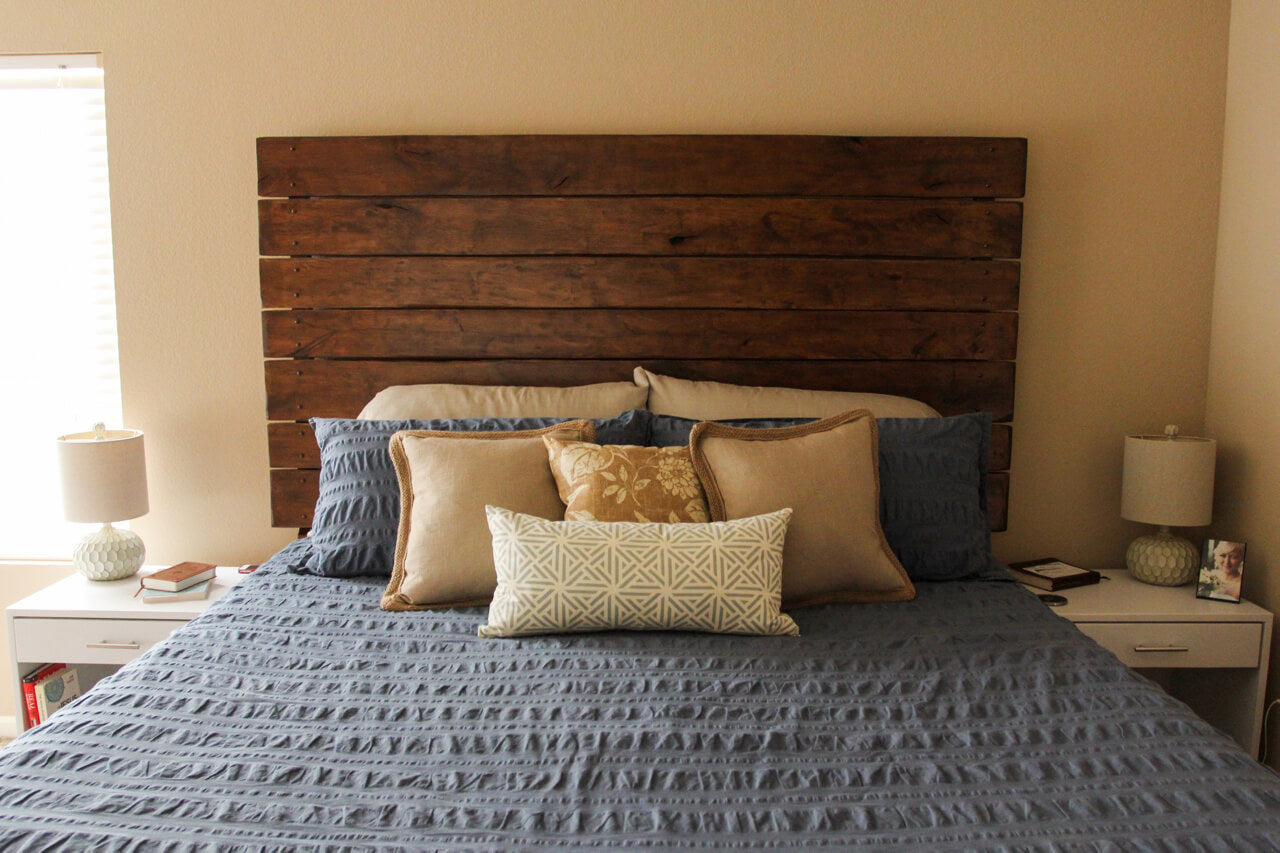

Bedroom Furniture
How To Fill The Gap Between A Mattress And Bed Frame
Modified: November 1, 2024
Discover the solution to closing the annoying gap between your mattress and bed frame with our expert tips on proper placement and bedroom furniture accessories.
(Many of the links in this article redirect to a specific reviewed product. Your purchase of these products through affiliate links helps to generate commission for Storables.com, at no extra cost. Learn more)
Introduction
One of the common issues that many people face with their bedroom furniture is the annoying gap between a mattress and bed frame. This gap can be frustrating, causing discomfort and even affecting the quality of sleep. Whether you have a new bed frame, an old one, or you’re using a different mattress size, the gap can pose challenges.
Understanding why this gap occurs and the potential issues it can cause is essential for finding the right solution to fill it. Fortunately, there are several effective methods to address this problem and ensure a more comfortable and seamless sleeping experience.
In this article, we will explore the reasons behind the gap between a mattress and bed frame, the potential issues it can cause, and the importance of filling this gap. Additionally, we will outline various common solutions that you can use to alleviate or entirely eliminate the gap, allowing for a more restful night’s sleep.
Whether you prefer to make use of mattress toppers or pads, foam or cushion inserts, rolled-up towels or blankets, DIY solutions using cardboard or plywood, or specialized gap fillers or mattress bridges, we have you covered. Read on to discover the best method to fill the gap and transform your sleeping experience.
Key Takeaways:
- Say goodbye to the annoying gap between your mattress and bed frame by using mattress toppers, foam inserts, or specialized gap fillers. Enjoy a seamless and comfortable sleeping experience with these effective solutions.
- Filling the gap isn’t just about comfort; it’s about promoting better sleep quality, spinal alignment, mattress longevity, and safety. Choose the right solution, whether it’s temporary or permanent, to transform your sleeping experience.
Read more: How To Fill Gaps Between Patio Stones
Understanding the Gap Between a Mattress and Bed Frame
Before we delve into the solutions for filling the gap, it’s important to understand why this gap occurs in the first place. The size and shape of mattresses and bed frames can vary, leading to inconsistencies that result in the gap.
One common reason for the gap is the difference in dimensions between the mattress and the bed frame. Standard mattress sizes, such as twin, full, queen, and king, have specific dimensions, but bed frames may have slight variations that don’t perfectly align with the mattress.
Another factor contributing to the gap is the use of adjustable bed frames. These frames allow for different positions and angles, but they may create a space between the mattress and the frame when adjusted to certain positions. The flexibility of these frames means that the gap can vary depending on the desired position.
Furthermore, over time, bed frames can experience wear and tear. This can lead to misalignment or shifting of the frame, causing a gap between the mattress and the frame. Additionally, if the bed frame has inadequate support or lacks proper center support legs, it can result in the mattress sinking in the middle and creating a gap.
It’s important to keep in mind that the size of the gap can vary depending on the specific combination of mattress and bed frame. Some gaps may be small and barely noticeable, while others can be more significant and cause discomfort or even pose safety risks.
Now that we understand why the gap occurs, let’s explore the potential issues that can arise as a result of this gap and why it’s crucial to find a solution to fill it.
Reasons for the Gap
The gap between a mattress and bed frame can occur due to various reasons. Understanding these reasons will help you identify the best solution to fill the gap effectively.
1. Size Discrepancies: One of the primary reasons for the gap is the difference in dimensions between the mattress and the bed frame. Even with standardized mattress sizes, there can be slight variations in width and length. If the bed frame is not perfectly matched to the mattress size, it can create a noticeable gap.
2. Adjustable Bed Frames: Adjustable bed frames are a popular choice for those seeking customized comfort. However, when these frames are adjusted to specific positions and angles, they can create gaps between the mattress and the frame. This is especially true for positions that involve elevating the head or foot of the bed.
3. Wear and Tear: Over time, bed frames may experience wear and tear, leading to misalignment or shifting. This can result in gaps between the mattress and the frame. Loose or broken joints, weakened support beams, and bent or damaged slats can all contribute to the development of gaps.
4. Insufficient Support: Inadequate support, especially in the center of the bed frame, can cause the mattress to sink. This sinking effect creates a gap in the middle of the bed, leading to discomfort and potential long-term damage to the mattress. It’s important to ensure that your bed frame has proper center support legs or a sturdy foundation to prevent this issue.
5. Incompatible Components: Sometimes, the gap occurs due to incompatible components. For example, using a mattress and bed frame from different manufacturers may result in a mismatch that creates a gap. It’s essential to ensure that all components of your bed are designed to work together seamlessly.
By identifying the specific reason behind the gap between your mattress and bed frame, you can choose the most suitable solution to address the issue effectively. In the next section, we will explore the potential issues that can arise as a result of this gap.
Potential Issues Caused by the Gap
The gap between a mattress and bed frame may seem like a minor inconvenience, but it can lead to several potential issues that can impact your sleep quality and overall comfort. It’s important to address this gap to prevent these problems from occurring.
1. Discomfort: One of the main issues caused by the gap is discomfort. The gap can create an uneven surface, causing the mattress to sag or shift, leading to an uncomfortable sleeping position. This can result in restless sleep, body aches, and a general lack of restorative rest.
2. Reduced Support: When there is a gap between the mattress and the bed frame, it can compromise the overall support provided by the bed. This lack of support can affect the alignment of your spine, leading to potential back and neck pain. Over time, inadequate support can contribute to chronic discomfort and musculoskeletal issues.
3. Accumulation of Dust and Debris: The gap between the mattress and bed frame can create a space where dust, debris, and even insects can accumulate. This can lead to allergies, respiratory issues, and decreased indoor air quality. Regular cleaning of the gap becomes necessary to maintain a healthy sleeping environment.
4. Potential Safety Hazards: A significant gap between the mattress and bed frame can pose safety hazards, especially for children or individuals with mobility issues. There is a risk of limbs getting trapped or individuals accidentally falling through the gap, leading to injuries. Filling the gap is crucial for ensuring a safe sleeping environment.
5. Premature Wear and Tear: The constant movement and shifting of the mattress due to the gap can cause premature wear and tear. This can lead to reduced lifespan of the mattress, leading to the need for expensive replacements sooner than expected.
By addressing the gap between your mattress and bed frame, you can prevent these potential issues from arising and create a more comfortable and supportive sleeping environment. In the next section, we will discuss the importance of filling this gap.
Importance of Filling the Gap
The gap between a mattress and bed frame may seem like a small inconvenience, but it’s important to recognize the significance of filling this gap. Here are some reasons why addressing the gap is crucial:
1. Comfortable Sleep: Filling the gap ensures that your mattress rests securely on the bed frame, eliminating any sagging or shifting. This allows for a more comfortable and restful sleep experience. You can finally say goodbye to waking up with aches and pains caused by an uneven sleeping surface.
2. Proper Spinal Alignment: The gap between the mattress and bed frame can compromise the alignment of your spine. By filling the gap, you create a level and supportive surface for your mattress, promoting proper spinal alignment. This can help alleviate back and neck pain, allowing you to wake up feeling refreshed.
3. Extended Mattress Lifespan: The constant movement of the mattress due to the gap can cause premature wear and tear. Filling the gap helps to stabilize the mattress and minimize unnecessary stress, thus extending its lifespan. This can save you money by postponing the need for a new mattress.
4. Hygienic Sleeping Environment: The gap can become a prime spot for dust, allergens, and other debris to accumulate. By filling the gap, you prevent the buildup of these particles, reducing the risk of allergies and respiratory issues. A cleaner sleeping environment contributes to overall health and well-being.
5. Safety: Filling the gap ensures a safe sleeping environment, particularly for children and individuals with mobility limitations. It eliminates the risk of limbs getting trapped or individuals accidentally falling through the gap, minimizing the chance of injuries.
Overall, filling the gap between a mattress and bed frame is essential for creating a comfortable, supportive, and hygienic sleeping environment. It promotes better sleep quality, spinal alignment, mattress longevity, and safety. In the following sections, we will explore various solutions that can effectively fill the gap.
Read more: How To Fill Gap Between Baseboard And Floor
Common Solutions to Fill the Gap
Fortunately, there are several effective solutions to fill the gap between a mattress and bed frame. Let’s explore some of the most common methods that can provide a seamless and comfortable sleeping experience:
1. Using Mattress Toppers or Pads: One simple solution is to use a mattress topper or pad that covers the entire surface of the mattress. These additional layers can add extra height and cushioning, effectively filling the gap and ensuring a more even sleeping surface.
2. Utilizing Foam or Cushion Inserts: Foam or cushion inserts can be placed in the gap between the mattress and bed frame. These inserts provide additional support and fill the empty space, preventing the mattress from sinking or shifting. They can be easily cut to size and adjusted as needed.
3. Employing Rolled-Up Towels or Blankets: A quick DIY solution involves rolling up towels or blankets and placing them in the gap. This makeshift filler provides temporary support and helps to minimize the gap between the mattress and bed frame. However, keep in mind that this solution may require readjustments from time to time.
4. Trying DIY Solutions with Cardboard or Plywood: Another cost-effective option is to use pieces of cardboard or plywood to create a barrier. These materials can be cut to fit the gap and placed between the mattress and bed frame to provide a stable surface. Ensure that the edges are smooth to avoid any discomfort.
5. Using Specialized Gap Fillers or Mattress Bridges: For a more permanent and specialized solution, there are gap fillers or mattress bridges available in the market. These products are specifically designed to span the gap and create a seamless connection between the mattress and bed frame. They are usually made of sturdy materials like foam or rubber.
It’s crucial to choose a solution that best fits your specific situation and preferences. Consider factors such as budget, ease of installation, comfort level, and long-term durability when selecting the most suitable method to fill the gap.
By employing one of these common solutions, you can ensure a snug and supportive fit between your mattress and bed frame, enhancing your overall sleep quality and comfort. In the next sections, we will explore each solution in more detail to help you make an informed decision.
Use a pool noodle to fill the gap between the mattress and bed frame. Simply cut the noodle to the length of the gap and place it along the edge of the bed frame to prevent the mattress from slipping.
Using Mattress Toppers or Pads
One of the simplest and most effective solutions to fill the gap between a mattress and bed frame is by using mattress toppers or pads. These additional layers of cushioning can provide both comfort and a seamless sleeping surface.
Mattress toppers and pads come in various thicknesses and materials, such as memory foam, latex, or down alternative. They are designed to cover the entire surface of the mattress and add an extra layer of padding. When placed on top of your mattress, they effectively fill the gap and create a smooth transition between the mattress and the bed frame.
When choosing a mattress topper or pad, consider the thickness and density that best suits your comfort preferences. Thicker toppers provide more cushioning and can help bridge larger gaps, while thinner ones may be sufficient for smaller gaps.
Additionally, consider the material of the topper or pad. Memory foam toppers conform to the contours of your body, providing personalized support and relieving pressure points. Latex toppers offer a responsive and durable option, while down alternative toppers provide a plush and comfortable feel.
Using mattress toppers or pads to fill the gap offers several advantages. Firstly, they provide an immediate and hassle-free solution that does not require any modifications to the mattress or bed frame. They can be easily placed on top of the mattress and adjusted as needed.
Furthermore, mattress toppers and pads not only fill the gap but also enhance the overall comfort of your sleep surface. They can add an extra layer of softness, cushioning, and support, which can improve your sleep quality and alleviate any discomfort caused by the gap.
Lastly, using mattress toppers or pads is a versatile solution. If you decide to change your mattress or bed frame in the future, you can still continue using the same topper or pad. This makes it a cost-effective option as it can adapt to different furniture configurations over time.
Before purchasing a mattress topper or pad, make sure to measure the dimensions of your mattress and consider any specific comfort preferences you may have. This will help you choose the right size and material that will effectively fill the gap and provide the desired comfort level.
In summary, using mattress toppers or pads is a simple, versatile, and effective solution for filling the gap between a mattress and bed frame. They offer both comfort and support, ensuring a smooth sleeping surface and a more restful night’s sleep.
Utilizing Foam or Cushion Inserts
Another effective solution to fill the gap between a mattress and bed frame is by utilizing foam or cushion inserts. These inserts provide additional support and help bridge the empty space, ensuring a more secure and comfortable sleeping surface.
Foam or cushion inserts are available in various shapes and sizes, making them adaptable to different gaps and bed frame configurations. They are usually made of high-density foam or supportive cushioning materials and can be easily cut to fit the specific dimensions of your gap.
To utilize foam or cushion inserts, measure the gap between your mattress and bed frame and purchase inserts that are slightly larger. Place the inserts in the gap, ensuring they are securely positioned to prevent shifting during sleep. Depending on the size of the gap, you may need one or multiple inserts to effectively fill the space.
One of the advantages of utilizing foam or cushion inserts is their ability to provide targeted support. By placing them strategically in the gap, you can address specific areas where the mattress may be sagging or sinking. This helps to create a more even and supportive sleeping surface, enhancing your comfort and reducing the risk of discomfort and back pain.
Additionally, foam or cushion inserts are often customizable, allowing you to adjust their thickness or firmness to meet your personal preferences. If you find the mattress to be too soft, you can opt for firmer inserts to provide extra support. Conversely, if the mattress is too firm, you can choose softer inserts for added cushioning.
Utilizing foam or cushion inserts is also a cost-effective solution. Compared to purchasing a completely new mattress or bed frame, inserts offer a budget-friendly option to improve the comfort and support of your sleep surface. They can extend the lifespan of your existing mattress by providing additional structural support.
However, it’s important to note that foam or cushion inserts may require occasional readjustment, especially if you move around a lot during sleep. Over time, the inserts may compress or shift slightly, so it’s advisable to check and reposition them as needed to maintain optimal support and fill the gap.
In summary, utilizing foam or cushion inserts is an effective and customizable solution for filling the gap between a mattress and bed frame. They provide targeted support, can be adjusted to meet personal preferences, and offer a cost-effective alternative to purchasing a new mattress or bed frame. By utilizing these inserts, you can create a more comfortable and supportive sleep surface.
Employing Rolled-Up Towels or Blankets
If you’re looking for a quick and temporary solution to fill the gap between your mattress and bed frame, employing rolled-up towels or blankets can be a practical option. This method is cost-effective and requires minimal effort to implement.
To employ rolled-up towels or blankets, simply roll them tightly and place them in the gap between the mattress and bed frame. The rolled-up towels or blankets act as makeshift fillers, providing support and minimizing the empty space.
One of the advantages of this solution is its flexibility. You can easily adjust the position and thickness of the rolled-up towels or blankets based on the size of the gap and your comfort preferences. You may need one or multiple rolls, depending on the width of the gap and the level of support required.
However, it’s important to note that this is a temporary solution and may require readjustment over time. As you move or adjust your sleeping position, the rolls may shift or flatten, necessitating occasional readjustment to maintain optimal support.
This method is particularly useful when you need a quick fix or when the gap is not significant. Rolled-up towels or blankets can effectively fill small to medium-sized gaps, ensuring a more even surface on which to sleep.
While employing rolled-up towels or blankets is a simple and cost-effective solution, it’s essential to consider the potential drawbacks. The rolls may not provide as consistent or firm support as other dedicated mechanisms, and they may need periodic readjustments to prevent them from moving or becoming uncomfortable during sleep.
In summary, employing rolled-up towels or blankets is a temporary and budget-friendly solution to fill the gap between your mattress and bed frame. It serves as an easy way to minimize the empty space and provide temporary support. However, it’s important to note that this method may not offer the same level of stability or durability as other dedicated gap-filling solutions. Consider this solution as a temporary fix while exploring more long-term options to ensure consistent comfort and support.
Read more: How To Fill Gap Between Wall And Ceiling
Trying DIY Solutions with Cardboard or Plywood
If you prefer a more hands-on approach to fill the gap between your mattress and bed frame, trying DIY solutions with cardboard or plywood can be a cost-effective and customizable option. These materials provide a sturdy barrier that helps bridge the gap and create a more even sleeping surface.
To try this DIY solution, you will need a piece of cardboard or plywood that is wide and long enough to cover the gap between the mattress and bed frame. Measure the dimensions of the gap and cut the material accordingly. Sand down any rough edges to ensure a smooth surface that won’t cause discomfort.
Place the cardboard or plywood between the mattress and bed frame, making sure it rests securely and covers the entire space. This DIY insert should provide stability and prevent the mattress from sagging or shifting in the gap.
One of the benefits of using cardboard or plywood is its versatility. These materials are readily available and can be easily cut to fit any size gap. They also offer a cost-effective solution compared to purchasing specialized gap fillers.
Additionally, DIY solutions with cardboard or plywood allow for customization. You can adjust the thickness of the material to meet your desired level of support. Thicker cardboard or plywood provides more rigidity, while thinner pieces can offer a softer feel.
It is worth mentioning that using cardboard or plywood as a DIY solution has its limitations. These materials may not offer the same level of support and durability as dedicated gap fillers. Over time, they may compress or warp, requiring replacement or readjustment.
Furthermore, care should be taken to ensure the edges of the cardboard or plywood are smooth and properly secured. Rough or sharp edges can cause discomfort or pose safety risks. Regularly inspect the insert to ensure it remains in good condition and not causing any damage to the mattress or bed frame.
Overall, trying DIY solutions with cardboard or plywood can be an effective and customizable option to fill the gap between your mattress and bed frame. It offers versatility in terms of size and thickness, and it is a cost-effective alternative. However, keep in mind the limitations and monitor the condition of the materials to ensure continued support and safety.
Using Specialized Gap Fillers or Mattress Bridges
For a more permanent and specialized solution, using specialized gap fillers or mattress bridges can effectively fill the gap between your mattress and bed frame. These products are designed specifically to address the issue and provide a seamless connection, ensuring optimal comfort and support.
Specialized gap fillers come in various forms, such as foam wedges, inflatable tubes, or support bars. These fillers are specifically designed to fit the space between the mattress and bed frame, providing consistent support and stability. They can be easily inserted and adjusted to minimize the gap and create a firm connection.
Another option is using a mattress bridge, which is a specially designed strip or platform that spans the entire width of the bed frame. The bridge acts as a connector, effectively filling the gap and providing a continuous surface for the mattress to rest upon. Mattress bridges are typically made of foam or solid materials.
Using specialized gap fillers or mattress bridges offers several advantages. Firstly, they provide a long-term, reliable solution that eliminates the need for constant readjustments or maintenance. Once properly installed, these fillers or bridges stay in place, ensuring a consistent and supportive sleeping surface.
Specialized gap fillers and mattress bridges are also designed to optimize comfort. They provide targeted support to areas prone to sagging or sinking, ensuring proper spinal alignment and reducing the risk of discomfort and body pain. Additionally, these solutions help to distribute weight evenly, enhancing the overall comfort and durability of the mattress.
One of the benefits of using specialized gap fillers or mattress bridges is their adaptability to different mattress and bed frame configurations. They can accommodate various sizes and types of mattresses, ensuring a seamless fit. Additionally, these solutions are often adjustable, allowing you to fine-tune the level of support and fill specific gaps as needed.
Lastly, specialized gap fillers and mattress bridges are specifically designed to address safety concerns. They eliminate the risk of limbs getting trapped in the gap or individuals accidentally falling through the space. This is particularly important for households with children or individuals with mobility issues.
While using specialized gap fillers or mattress bridges offers numerous benefits, it’s important to choose products that are suitable for your specific bed frame and mattress. Consider factors such as size, material, ease of installation, and customer reviews to ensure the best fit and functionality.
In summary, using specialized gap fillers or mattress bridges provides a reliable and long-term solution to fill the gap between your mattress and bed frame. They offer targeted support, enhance comfort, and address safety concerns. By opting for these dedicated solutions, you can create a seamless and supportive sleeping surface for a more restful night’s sleep.
Conclusion
The gap between a mattress and bed frame can be a frustrating issue that affects the comfort and quality of your sleep. However, with the variety of solutions available, you can easily fill this gap and enjoy a more seamless sleeping experience.
Understanding the reasons behind the gap, such as size discrepancies, adjustable bed frames, wear and tear, insufficient support, and incompatible components, is the first step in finding the right solution. By identifying the cause, you can choose the most appropriate method to address the issue effectively.
Importantly, filling the gap is not just about comfort; it also has a significant impact on your sleep quality, spinal alignment, mattress lifespan, and overall safety. Ignoring the gap can lead to discomfort, reduced support, accumulation of dust and debris, potential safety hazards, and premature wear and tear of your mattress.
Fortunately, there are several common solutions to fill the gap. You can use mattress toppers or pads to add an extra layer of cushioning and support, utilize foam or cushion inserts for targeted support, employ rolled-up towels or blankets as temporary fillers, try DIY solutions with cardboard or plywood for a customizable approach, or opt for specialized gap fillers or mattress bridges for a more permanent solution.
Each solution has its own advantages and considerations. Whether you choose cost-effective options like towels or blankets, opt for comfortable mattress toppers or pads, embrace a hands-on approach with DIY solutions, or invest in specialized gap fillers or mattress bridges, the key is finding the solution that best suits your specific needs and preferences.
In conclusion, do not underestimate the importance of filling the gap between your mattress and bed frame. By addressing this issue, you can greatly enhance your sleep comfort, maintain proper spinal alignment, extend the lifespan of your mattress, and create a safe sleeping environment.
Take the time to explore the different solutions and consider factors such as cost, comfort, durability, and ease of installation. Whether you try out a temporary fix, go for a more permanent solution, or seek professional advice, the goal is to ensure a seamless and enjoyable sleeping experience that promotes optimal rest and well-being.
Frequently Asked Questions about How To Fill The Gap Between A Mattress And Bed Frame
Was this page helpful?
At Storables.com, we guarantee accurate and reliable information. Our content, validated by Expert Board Contributors, is crafted following stringent Editorial Policies. We're committed to providing you with well-researched, expert-backed insights for all your informational needs.
